Conservatory types explained — find the perfect style for your home
Explore the different types of conservatory available and learn which is best for your home, from classic Victorian styles to modern lean-to designs
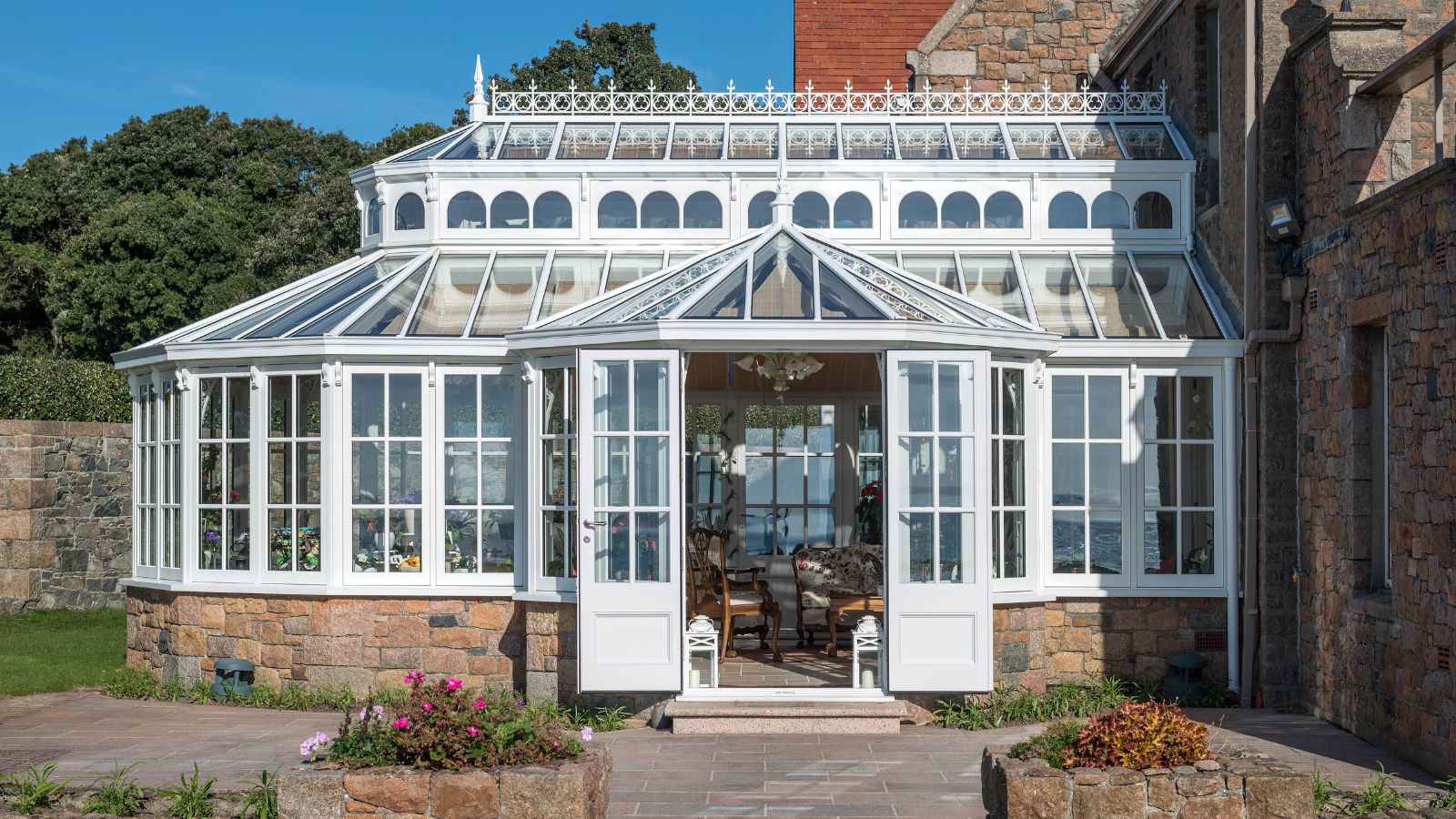
Thinking about adding a conservatory but not sure which conservatory type is right for your property? Whether you’re planning a full-width kitchen extension or a simple lean-to design, choosing the right conservatory type can have a big impact on both the look and feel of your home.
From traditional Victorian and Edwardian styles to simple lean-to structures, each design has its own advantages and limitations. Our guide walks you through the most popular conservatory ideas in the UK, outlining what each style offers in terms of looks, practicality and planning. We've also included expert advice from leading conservatory designers to help you decide which design best suits your space, lifestyle and home’s character.
Conservatory types explained
“When choosing between types of conservatory, homeowners should consider their property’s architectural style, intended use, and personal preferences,” explains Karen Bell, sales director at David Salisbury. “It all depends on how the space is going to be used".
Here’s what you need to know about each of the most common types of conservatory.
Victorian conservatories
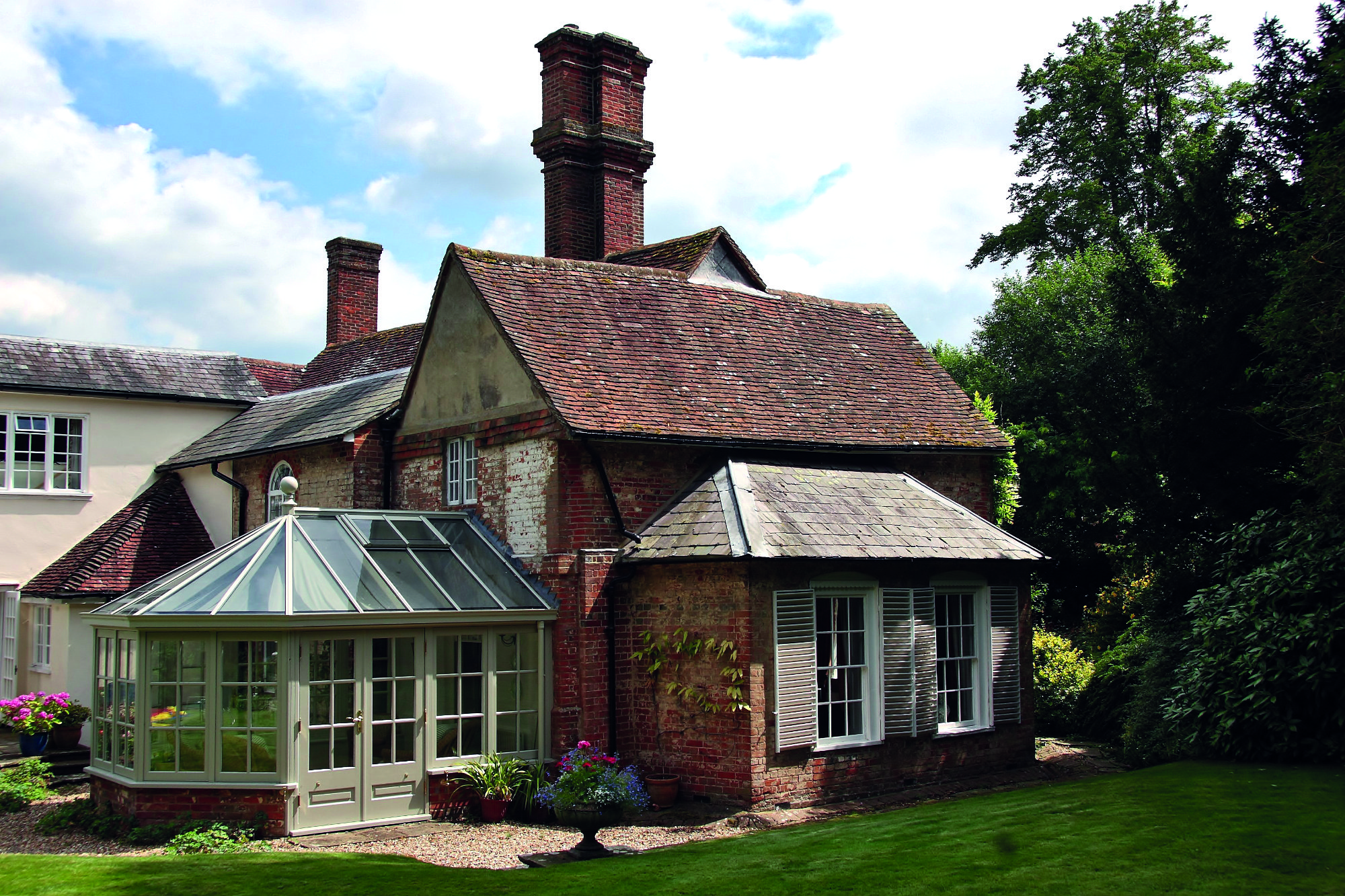
Defined by their ornate detailing, pitched roofs and bay frontage, Victorian conservatories have a timeless appeal that works particularly well for period homes. Their angled and curved deigns not only enhance a property's kerb appeal but also welcome in plenty of natural light.
“Victorian conservatories are the most ornate style and serve as spacious sunrooms,” explains Sharon Wright, sales director and co-founder of DHW Joinery. “They work superbly with period architecture and are ideal if you want a more stylised or elaborate feel".
What are Victorian conservatories best for?
- Period or heritage-style properties.
- Sunrooms, reading rooms or plant-filled garden rooms.
- Maximising your garden views.
"Beyond their decorative appeal, Victorian conservatories work well with older buildings because the properties typically have smaller rooms," explains Mervyn Montgomery, managing director of Hampton Conservatories. “Homeowners often remove internal walls to create a larger, more free-flowing, multi-use space.”
What you need to know before opting for this type of conservatory
Because of the bay-fronted shape, you may find that Victorian conservatories don’t offer quite as much usable floor space as a square or rectangular design. They can also be more costly to construct due to the extra detailing and shaping involved. That said, this style is often favoured by planning departments in conservation areas, where maintaining traditional proportions is essential.
Edwardian conservatories
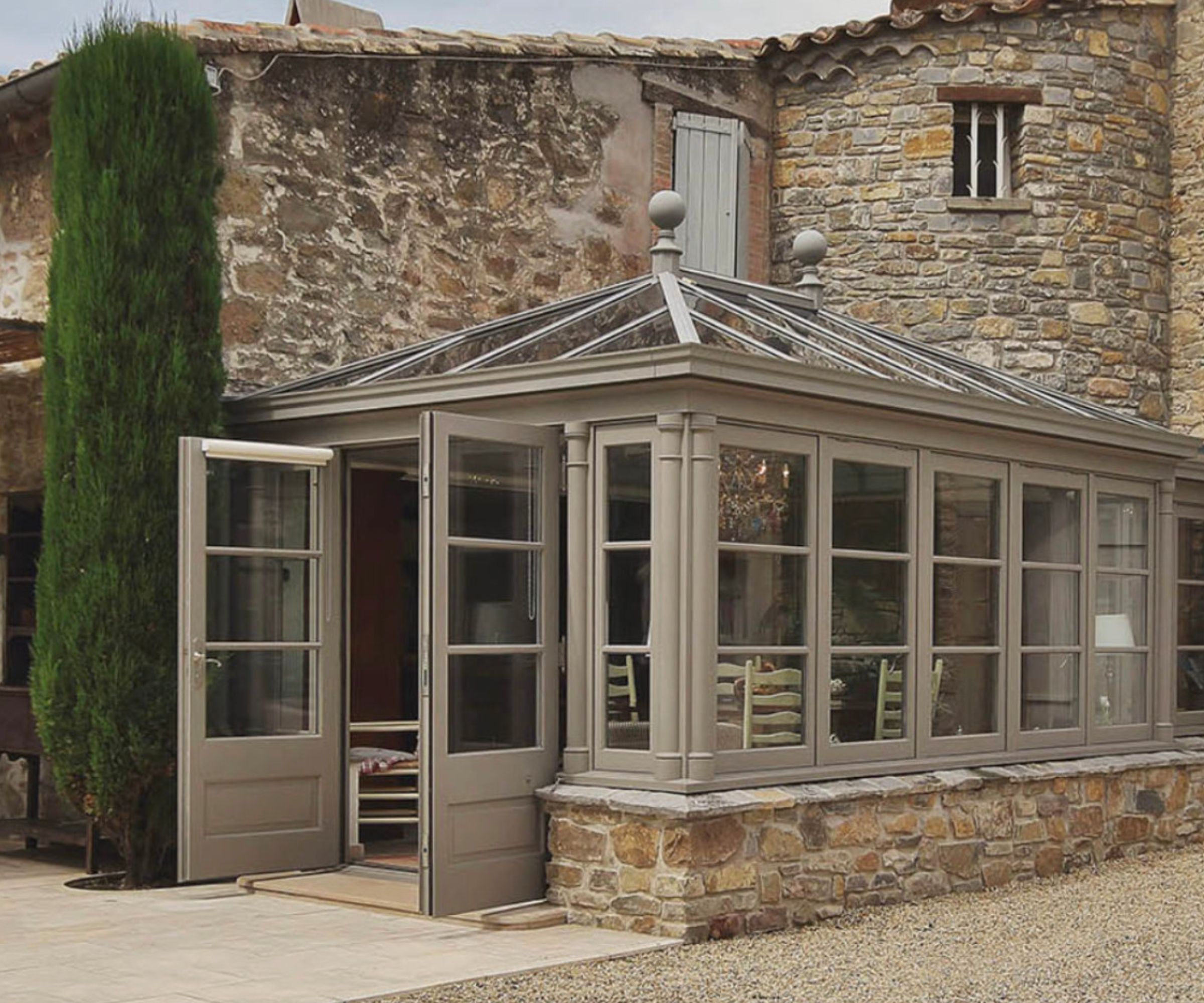
With their clean lines, symmetrical shape and generous proportions, Edwardian conservatories are ideal for anyone looking to add space without compromising on classic style. Unlike the more decorative Victorian design, Edwardian conservatories feature a rectangular or square footprint with a pitched roof, making them incredibly practical for everyday use.
“Edwardian conservatories feature geometric, symmetrical designs that are well-suited for traditionally open, square spaces,” explains Sharon Wright. “An Edwardian conservatory is typically the largest style of conservatory, with a pitched central roof above a square or rectangular base, providing maximum floor space – perfect for glazed kitchen extensions.”
What are Edwardian conservatories best for?
- Creating large, multi-functional living spaces.
- Kitchen-diner extensions or open-plan family rooms.
- Homes with a more symmetrical architectural style.
What you need to know before opting for this type of conservatory
Thanks to their square or rectangular shape, Edwardian conservatories offer more usable floor area than other traditional styles – a major plus if you want to add a dining table, kitchen island or large seating area. Their design also makes them suitable for both period and modern properties. However, because of their size and shape, they may require more garden space than a lean-to or Victorian option. Their prominent roof pitch might also trigger conservatory planning permissions in some areas, particularly if your home is semi-detached or in a conservation zone.
Lean-to conservatories

A lean-to conservatory is built with a single sloping roof that leans against the existing wall of your property, hence the name. Simple, space-saving and modern, “lean-to conservatories are perfect for narrow spaces, lower eaves or longer, thinner plots positioned to the house's side,” explains Sharon Wright.
"Lean-tos do not require much building height so they can be easily added to low single-storey properties or those where the ground floor height is in short supply,” adds Mervyn Montgomery.
What are lean-to conservatories best for?
- Bungalows and single-storey homes.
- Homes with restricted roof height or awkward layouts.
- Modern extensions that want to maximise natural light.
What you need to know before opting for this type of conservatory
Lean-to conservatory costs can vary depending on the materials used, the size of the structure, and whether existing groundwork can be reused. However, they tend to be more cost-effective than larger or more complex styles of conservatory, making them a popular option for homeowners looking to extend on a budget.
However, Mervyn Montgomery warns not all lean-tos are created equal: “Buyer beware – lean-tos haven’t always had the best reputation, so it’s usually worth using a well-known manufacturer if you want to add value to your home. And when you come to sell, it might be worth badging your lean-to as a conservatory or orangery.”
Gable-end conservatories
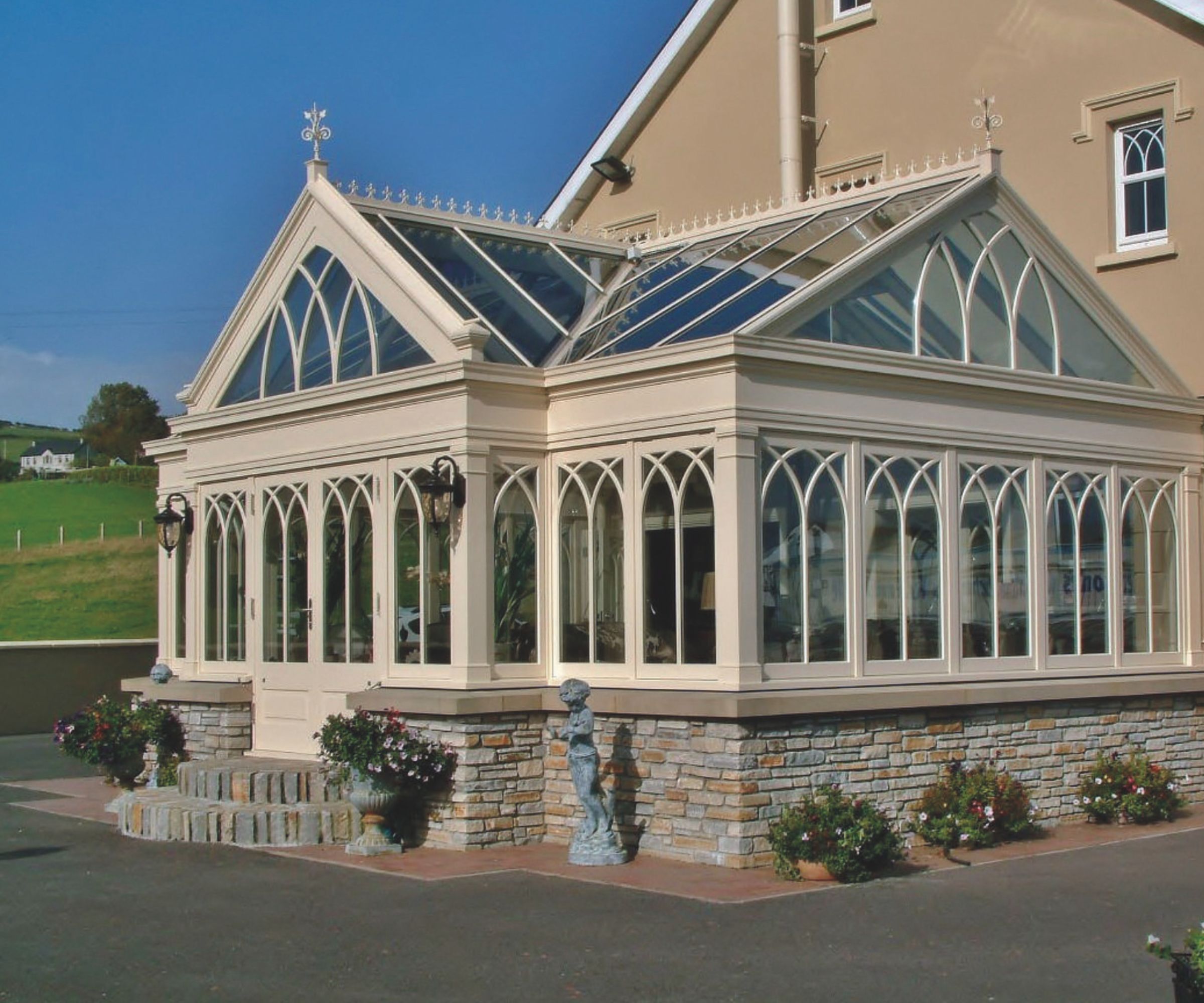
With their upright front elevation and pitched roof, gable-end conservatories are perfect for creating an impressive sense of space and light. As the name suggests, this type of conservatory is designed to mimic the gable end of a house, and unlike sloped or curved-front designs, its triangular façade maximises both headroom and window space.
“The gable end conservatory has a rectangular shape but features a high, dramatic pitched roof,” says Sharon Wright. “It’s suitable for smaller or more limited spaces that want to feel more spacious at the front or rear of a property.”
What are gable-end conservatories best for?
- Smaller plots that would benefit from height and light.
- Homes with symmetrical or formal garden layouts.
What you need to know before opting for this type of conservatory
Gable-end conservatories often requires careful consideration when it comes to planning, often due to the increased roof height. They may not be suitable for properties with low eaves or in areas with strict planning rules. However, their symmetrical shape makes them easy to furnish, and their clean lines lend themselves well to both traditional and contemporary homes.
P-shaped & T-shaped conservatories
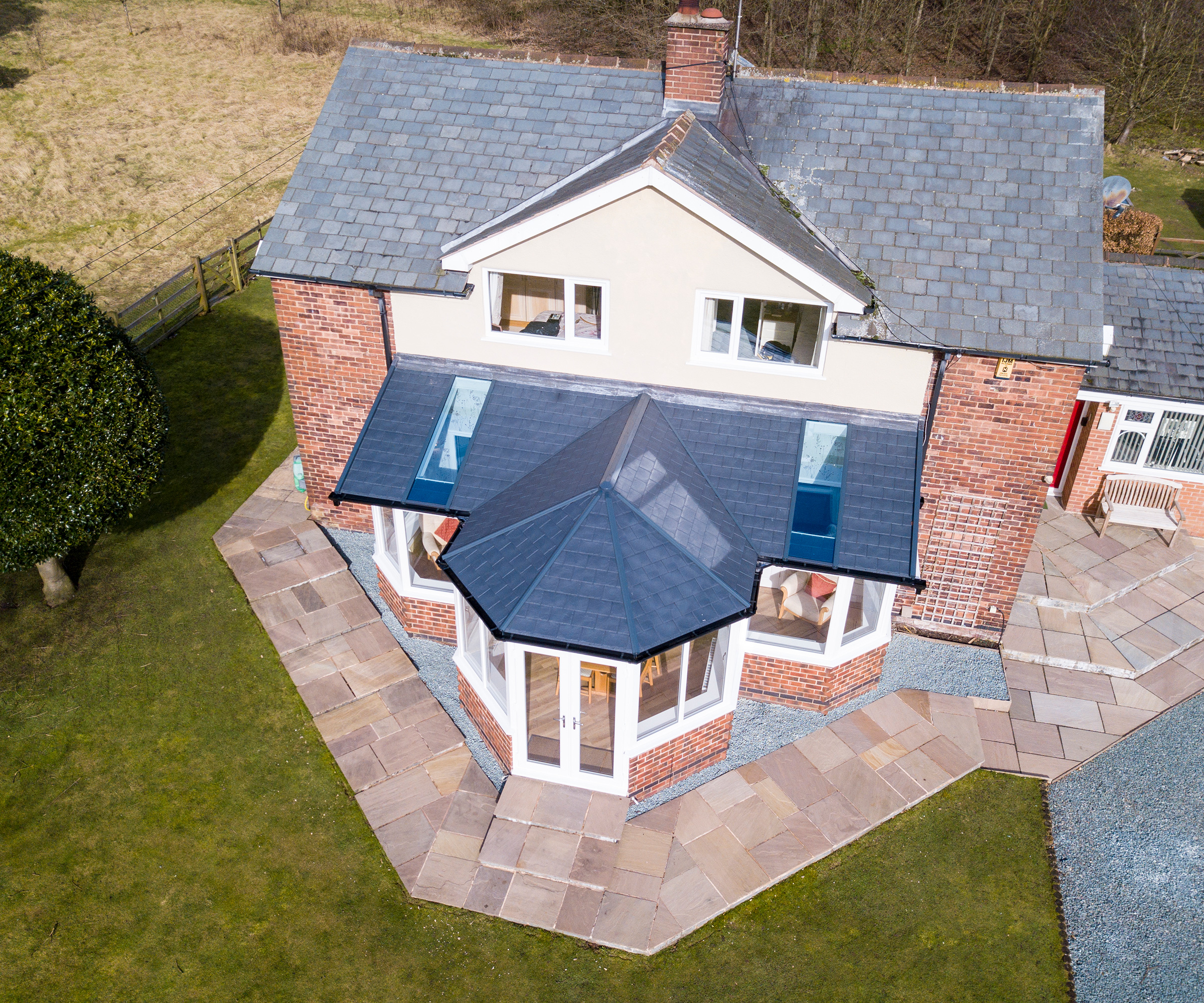
If you’re looking to create a large, multifunctional space that flows naturally into the garden, P-shaped and T-shaped conservatories are worth considering. These hybrid styles combine elements from more traditional designs – often blending Victorian, Edwardian, or lean-to structures – to form spacious layouts that suit larger homes and open-plan living.
A P-shaped conservatory typically merges a lean-to section with a Victorian-style bay, forming a footprint that resembles the letter ‘P’. This design works particularly well for wraparound spaces or homes with wide rear elevations. A T-shaped conservatory, meanwhile, features a central projection that extends into the garden, with two wings branching off – a layout that’s especially effective on detached properties with plenty of available space.
“Sometimes, we fuse styles together to create bespoke L-shapes, P-shapes, and other rounded or wrap-around designs,” says Sharon Wright, sales director and co-founder of DHW Joinery. “These layouts can work really well for multi-use rooms.”
What are P- and T-shaped conservatories best for?
- Larger properties with generous garden space.
- Open-plan kitchen-diners, playrooms or entertaining spaces.
- Creating distinct zones within one glazed extension.
What you need to know before opting for these types of conservatory
A P- or T-shaped layout allows you to define distinct zones, such as a dining area, seating space or playroom, while keeping everything under one roof. These designs can also improve access to the garden from different points of the house.
However, they do require more footprint than simpler designs and therefore conservatory costs may be more expensive due to their structural complexity. Careful design and early consultation with your local planning authority is advised, especially if the conservatory spans multiple elevations or wraps around corners.
Orangeries
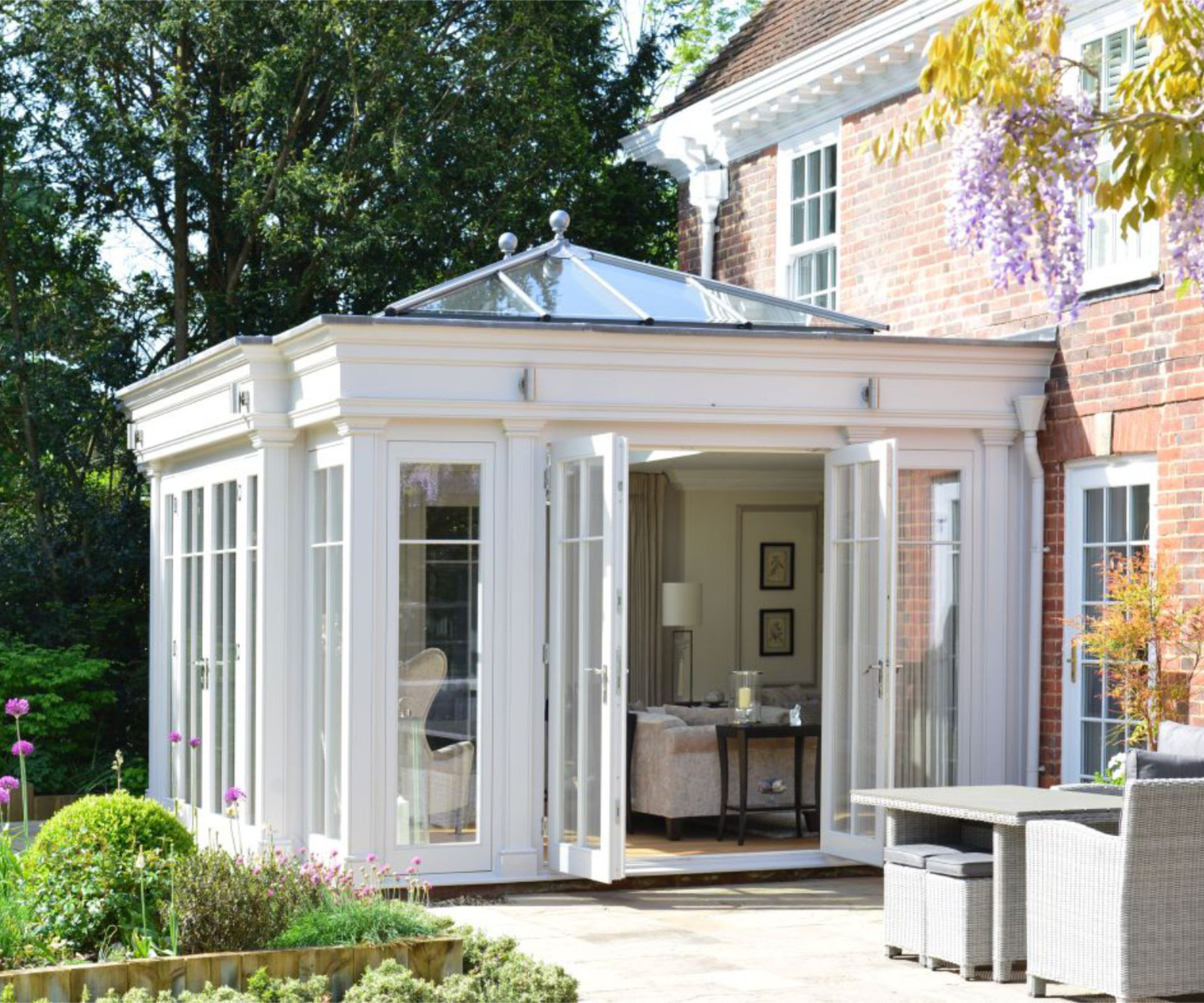
Not technically a conservatory, but often considered alongside one, an orangery is a glazed extension with a more solid, architectural feel. Typically built with masonry pillars, a flat roof and one or more roof lanterns, orangeries are designed to feel like a seamless continuation of your home.
“While similar to a conservatory, the main differentiation between an orangery and conservatory is the roof composition,” explains Mervyn Montgomery. “A conservatory roof is usually entirely made of glazing, whereas an orangery will often have a flat, solid roof with roof lantern(s).”
What are orangeries best for?
- Kitchen extensions and family living spaces.
- Homes where insulation and privacy are a priority.
- Enhancing period or listed buildings.
What you need to know
In the orangery vs conservatory debate, orangeries tend to offer better thermal performance and a more permanent feel. “They’re well-suited for multifunctional family rooms,” adds Lisa Morton of Vale Garden Houses, while Karen Bell of David Salisbury both note they blend seamlessly with period and contemporary homes alike.
How to choose the right conservatory type for your home
With so many conservatory types available, the best place to start is by thinking about how you’ll use the space and how it will work with the layout and style of your home.
Think about how it will be used
“When we discuss the idea of any glazed extension with a client, we always talk about its purpose first,” says Mervyn Montgomery, managing director of Hampton Conservatories. “This is important because different styles of conservatories, orangeries and lean-tos all have their merits, and it's vital to understand how a room will be used in order to specify the appropriate type".
Will your conservatory be an everyday living area, a kitchen-diner, or a sunny retreat for reading and relaxing? Your answer to these questions will help steer the design.
Consider your style of property
You’ll also want to consider your home’s architectural character. “Any new addition should be carefully designed in harmony with the architectural style and historical character of the existing building,” says Lisa Morton of Vale Garden Houses. A Victorian home may suit a more decorative structure, while simpler homes might benefit from a streamlined lean-to.
Think beyond aesthetics
Practicalities also matter. For example, you'll need to consider whether you have enough head height for a pitched roof, and check if planning permission is likely to be required, especially for larger or more prominent conservatory designs. Think, too, about how your choice of glazing will affect light levels, privacy and conservatory insulation. Exploring different conservatory roof types, from fully glazed to tiled or lantern-style options, can help you tailor the design to suit your property and how you plan to use the space.
Meet Our Conservatory Experts

Lisa is Director of Vale Garden Houses, a family run business founded over 40 years ago, know as one of the most respected and established designers and builders of glazed structures.

In her role as sales and marketing director at David Salisbury, Karen has amassed a wealth of conservator knowledge to help her guide customers towards the right conservatory choice for their home.

Sharon is co-founder and Director of DHW Joinery. She excels in collaboration with architects, builders, structural engineers, and planning consultants and her industry insights have shaped our distinguished team and products.

Mervyn established Hampton Conservatories, almost 40 years ago, as a manufacturer of bespoke joinery products for the restoration and heritage sectors. Since then, he has personally overseen the expansion of his company throughout the UK, Ireland and beyond.
When you're designing a conservatory for your home, choosing the right style is just the beginning. Don’t overlook your conservatory interiors. The right furnishings and conservatory blinds can make all the difference.
Get the Homebuilding & Renovating Newsletter
Bring your dream home to life with expert advice, how to guides and design inspiration. Sign up for our newsletter and get two free tickets to a Homebuilding & Renovating Show near you.

Gabriella is an interiors journalist and has a wealth of experience creating interiors and renovation content. She was Homebuilding & Renovating's former Assistant Editor as well as the former Head of Solved at sister brand Homes & Gardens, where she wrote and edited content addressing key renovation, DIY and interior questions.
She’s spent the past decade crafting copy for interiors publications, award-winning architects, and leading UK homeware brands. She also served as the Content Manager for the ethical homeware brand Nkuku.
Gabriella is a DIY enthusiast and a lover of all things interior design. She has a particular passion for historic buildings and listed properties, and she is currently in the process of renovating a Grade II-listed Victorian coach house in the West Country.
